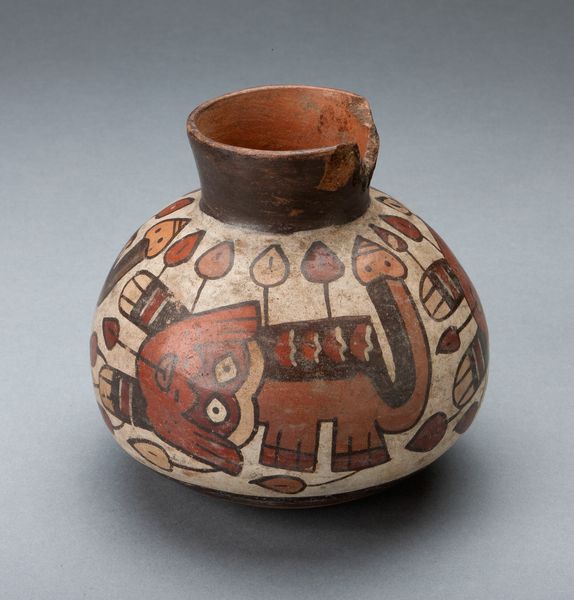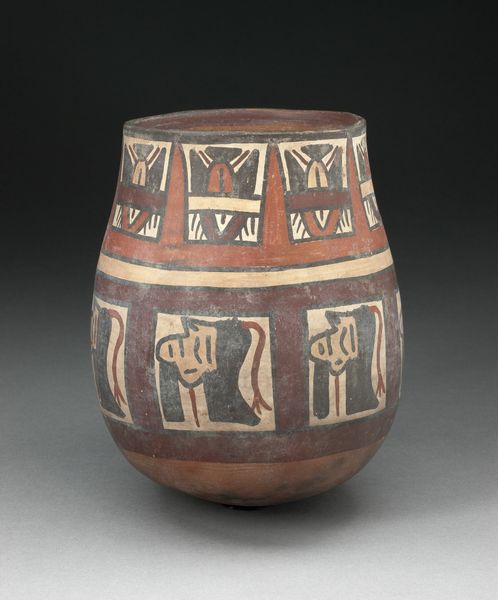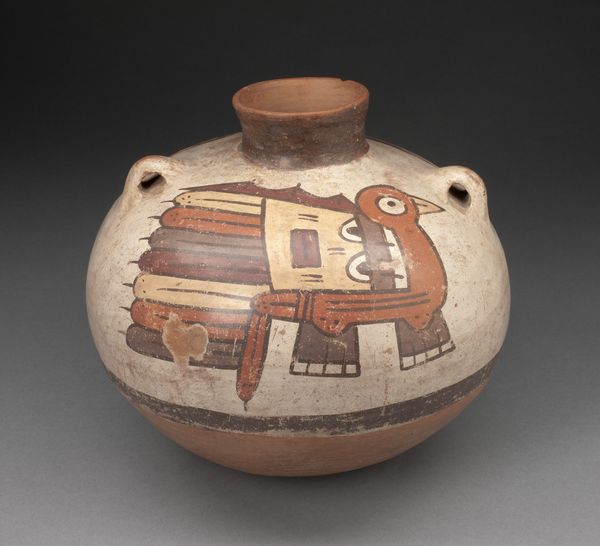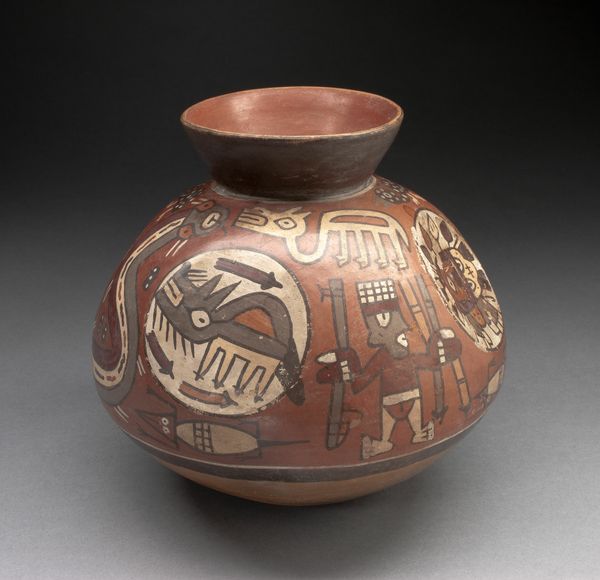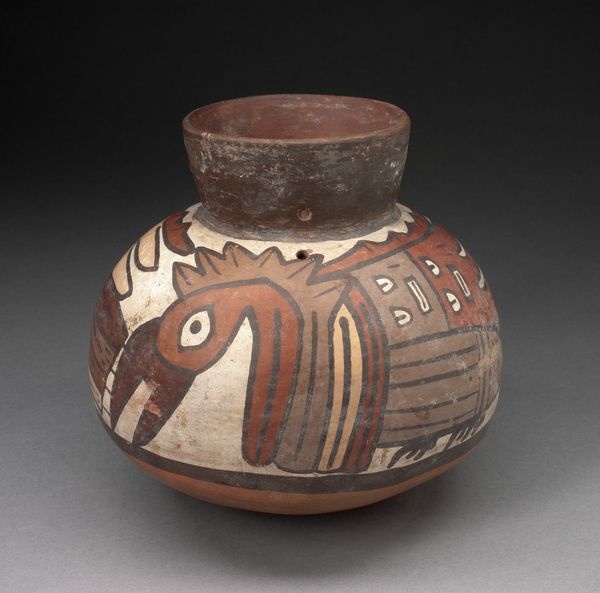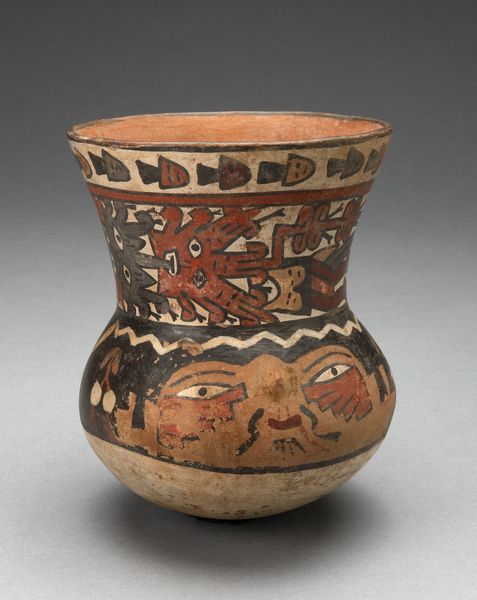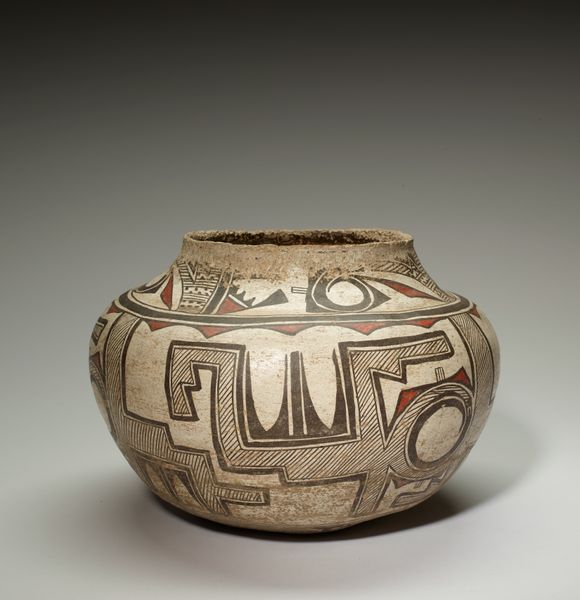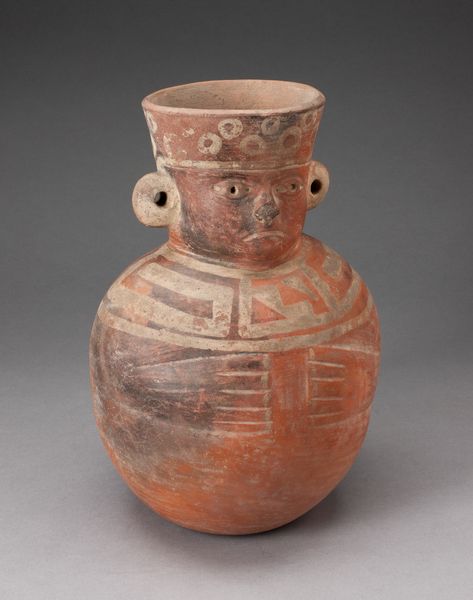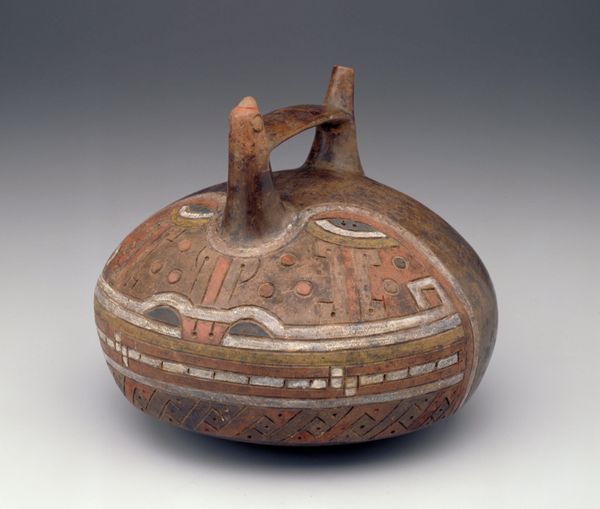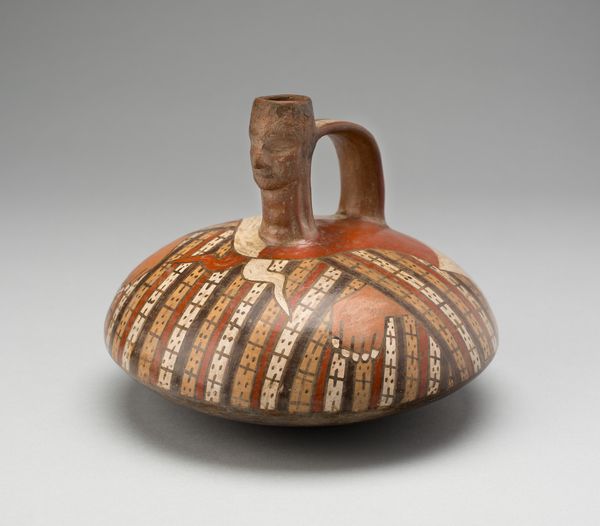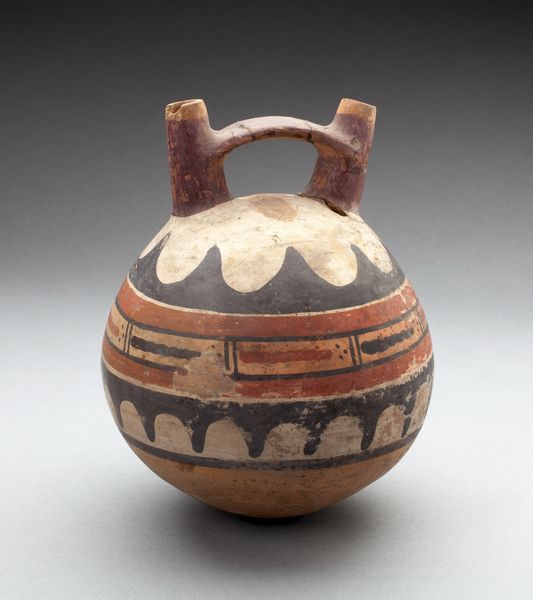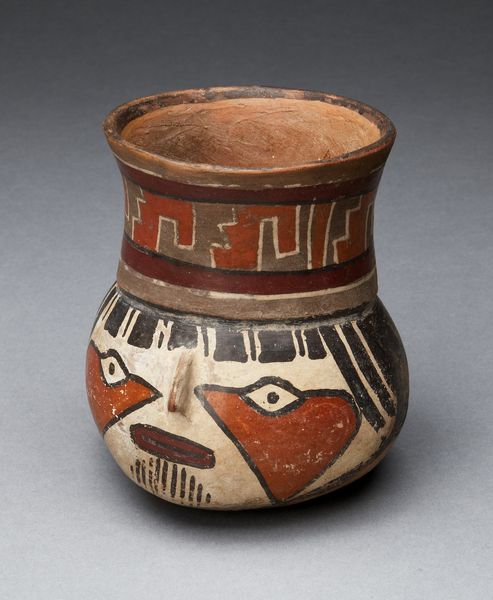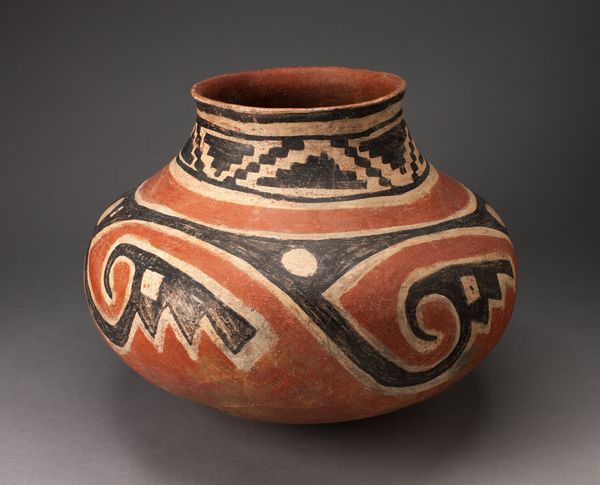
Jar with Narrowed Neck Depciting Anthropomorphic Insect with Trophy Head c. 180 - 500
0:00
0:00
ceramic
#
ceramic
#
figuration
#
vessel
#
ceramic
#
indigenous-americas
Dimensions: 14.6 × 17.2 cm (5 3/4 × 6 3/4 in.)
Copyright: Public Domain
Editor: This is a ceramic jar from the Nazca culture, dating roughly from 180 to 500 AD. The title is "Jar with Narrowed Neck Depicting Anthropomorphic Insect with Trophy Head." It feels incredibly narrative to me, like it's telling a story I can't quite decipher. How do you interpret this work? Curator: For me, this piece speaks volumes about power dynamics and ritual practices within the Nazca society. Think about it: an anthropomorphic insect, a hybrid creature, prominently displaying a trophy head. What does that suggest about their social hierarchy and beliefs concerning warfare, sacrifice, and even ancestor veneration? Editor: So, it’s less about a literal insect and more about a symbolic representation of power? Curator: Precisely. Consider the broader context. The Nazca culture was deeply connected to their environment, particularly in the face of harsh desert conditions. This imagery may have been a symbolic assertion of control over life and death, a way of ensuring successful harvests and community survival. And what about the ceramic material itself? Clay is so intrinsic to human civilization; forming a vessel also speaks to humanity. Editor: That makes so much sense. So, it's about reframing the image. Is this just a scene depicting violence or about reinforcing cultural beliefs? I see a relationship between these acts and cultural affirmation. Curator: Exactly. We can explore these ideas, engaging in necessary conversations about the representation of power, ritual violence, and the way societies construct meaning through art. Do you notice the way it’s painted and fired and the fact that is has been preserved so beautifully over so many centuries? Editor: That is incredible. I hadn't considered how it links past and present cultures in complex and challenging ways. Thanks! Curator: And thank you. Looking at it from your fresh perspective helps me to think about how to explain these histories for newer audiences.
Comments
No comments
Be the first to comment and join the conversation on the ultimate creative platform.
